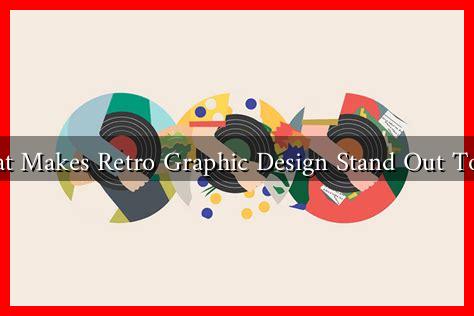-
Table of Contents
What Makes Retro Graphic Design Stand Out Today
In an era dominated by sleek, minimalist aesthetics and cutting-edge technology, retro graphic design has emerged as a captivating counterpoint. This nostalgic style, characterized by its vibrant colors, bold typography, and playful illustrations, has found a renewed audience in contemporary culture. But what exactly makes retro graphic design stand out today? This article explores the elements that contribute to its enduring appeal, the cultural significance it holds, and how it continues to influence modern design.
The Allure of Nostalgia
Nostalgia plays a pivotal role in the resurgence of retro graphic design. As people yearn for simpler times, they are drawn to designs that evoke fond memories of the past. This emotional connection is particularly strong among millennials and Gen Z, who often seek authenticity in a world saturated with digital noise.
- Emotional Resonance: Retro designs often remind individuals of their childhood or significant cultural moments, creating a sense of comfort and familiarity.
- Timelessness: Many retro styles, such as Art Deco or mid-century modern, have a timeless quality that transcends trends, making them relevant across generations.
- Unique Aesthetic: The bold colors and distinctive typography of retro designs stand out in a sea of minimalist approaches, capturing attention and sparking interest.
Visual Elements That Define Retro Design
Retro graphic design is characterized by specific visual elements that set it apart from contemporary styles. These elements not only create a unique aesthetic but also contribute to the overall impact of the design.
- Color Palettes: Retro designs often feature vibrant, saturated colors that evoke a sense of joy and playfulness. Think of the bright oranges, greens, and yellows of the 70s or the pastel hues of the 80s.
- Typography: Bold, expressive fonts are a hallmark of retro design. From the curvy scripts of the 60s to the geometric sans-serifs of the 80s, typography plays a crucial role in conveying the era’s spirit.
- Illustration Styles: Hand-drawn illustrations and playful graphics are common in retro design, adding a personal touch that resonates with audiences.
Case Studies: Brands Embracing Retro Design
Several brands have successfully integrated retro graphic design into their marketing strategies, demonstrating its effectiveness in capturing consumer attention and fostering brand loyalty.
- Coca-Cola: The iconic beverage brand has frequently revisited its vintage designs, particularly during special campaigns. Their retro packaging often evokes nostalgia, reminding consumers of the brand’s long-standing heritage.
- Levi’s: The denim giant has embraced retro aesthetics in its advertising and product lines, appealing to consumers’ desire for authenticity and timeless style.
- Target: The retail giant has launched various collections inspired by retro designs, showcasing how nostalgia can be effectively leveraged in product marketing.
The Role of Technology in Retro Design
Interestingly, technology has played a significant role in the revival of retro graphic design. With the rise of digital tools, designers can easily replicate vintage styles and create new works that pay homage to the past.
- Digital Tools: Software like Adobe Illustrator and Photoshop allows designers to experiment with retro aesthetics, making it easier to create authentic-looking designs.
- Social Media: Platforms like Instagram and Pinterest have become hotbeds for retro-inspired content, allowing designers to share their work and connect with like-minded individuals.
- Print-on-Demand Services: Services like Redbubble and Society6 enable artists to sell retro designs on various products, making it easier for consumers to access and support this style.
Conclusion: The Enduring Appeal of Retro Graphic Design
Retro graphic design stands out today due to its emotional resonance, unique visual elements, and the cultural significance it holds. As brands continue to embrace this nostalgic aesthetic, it becomes clear that retro design is not merely a trend but a lasting influence on contemporary culture. By tapping into the power of nostalgia and leveraging modern technology, designers can create compelling works that resonate with audiences across generations. As we move forward, the fusion of retro and modern design will likely continue to evolve, offering exciting possibilities for the future of graphic design.
For more insights into graphic design trends, you can explore resources like Smashing Magazine or Creative Bloq.

